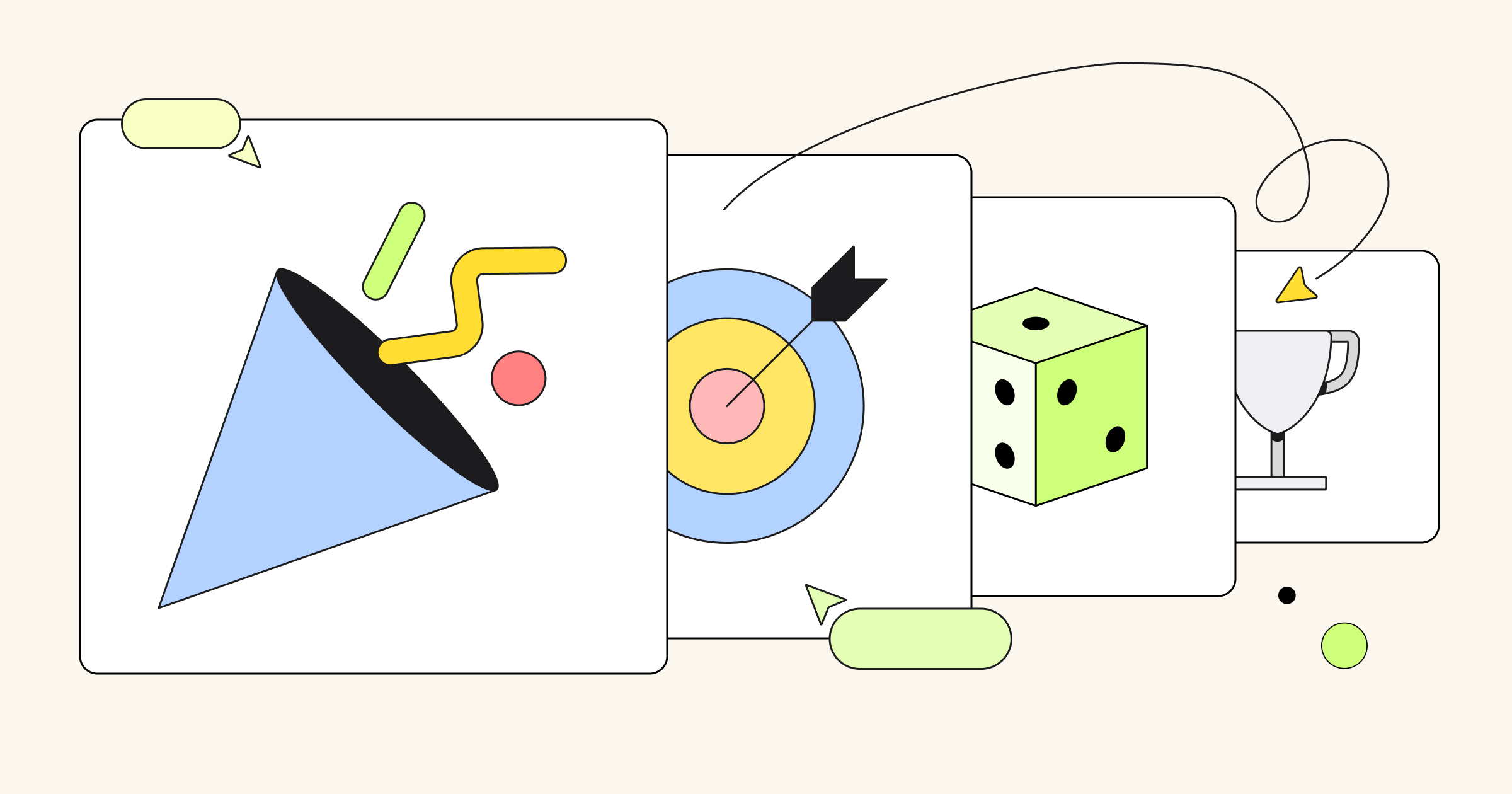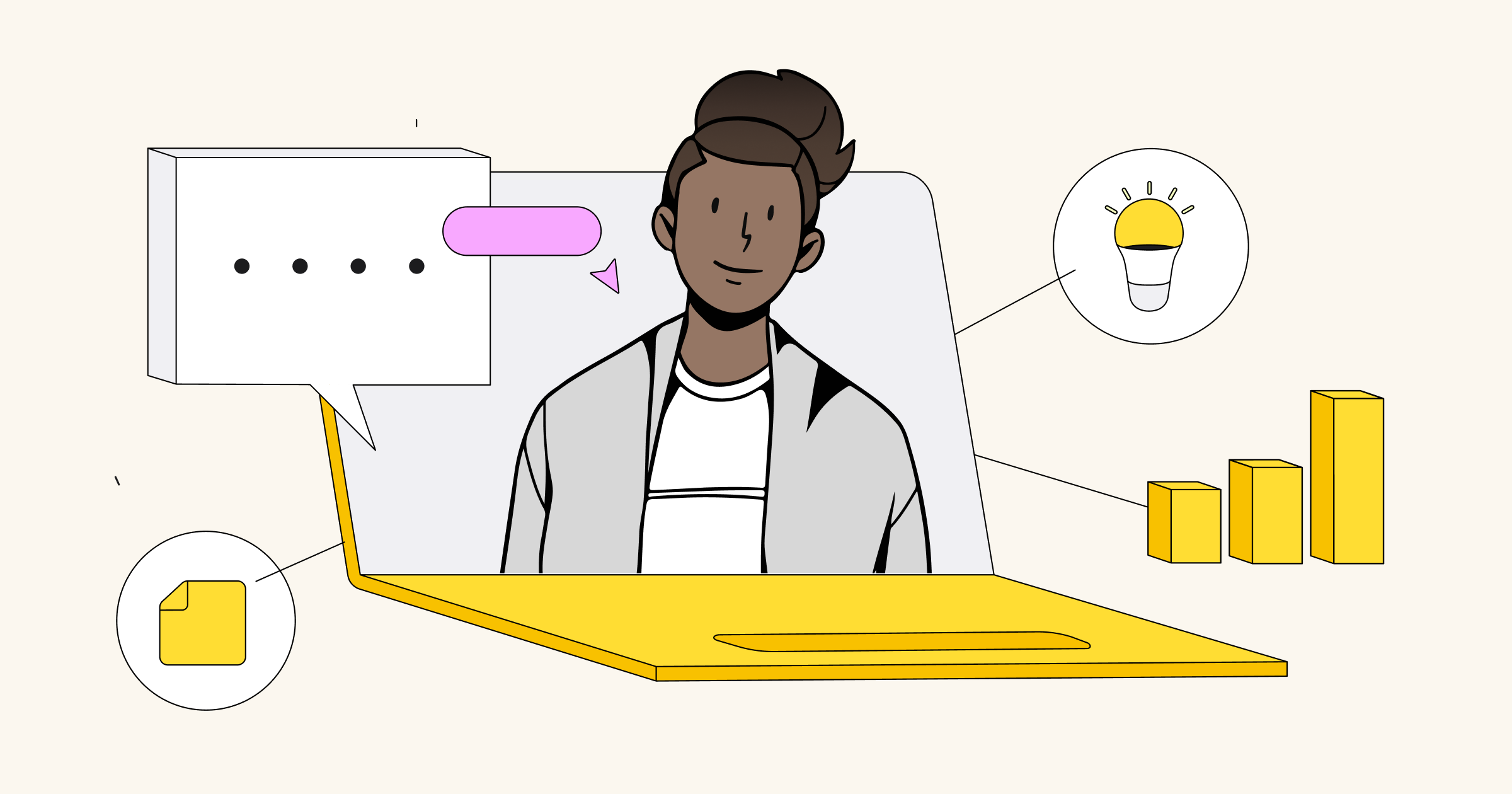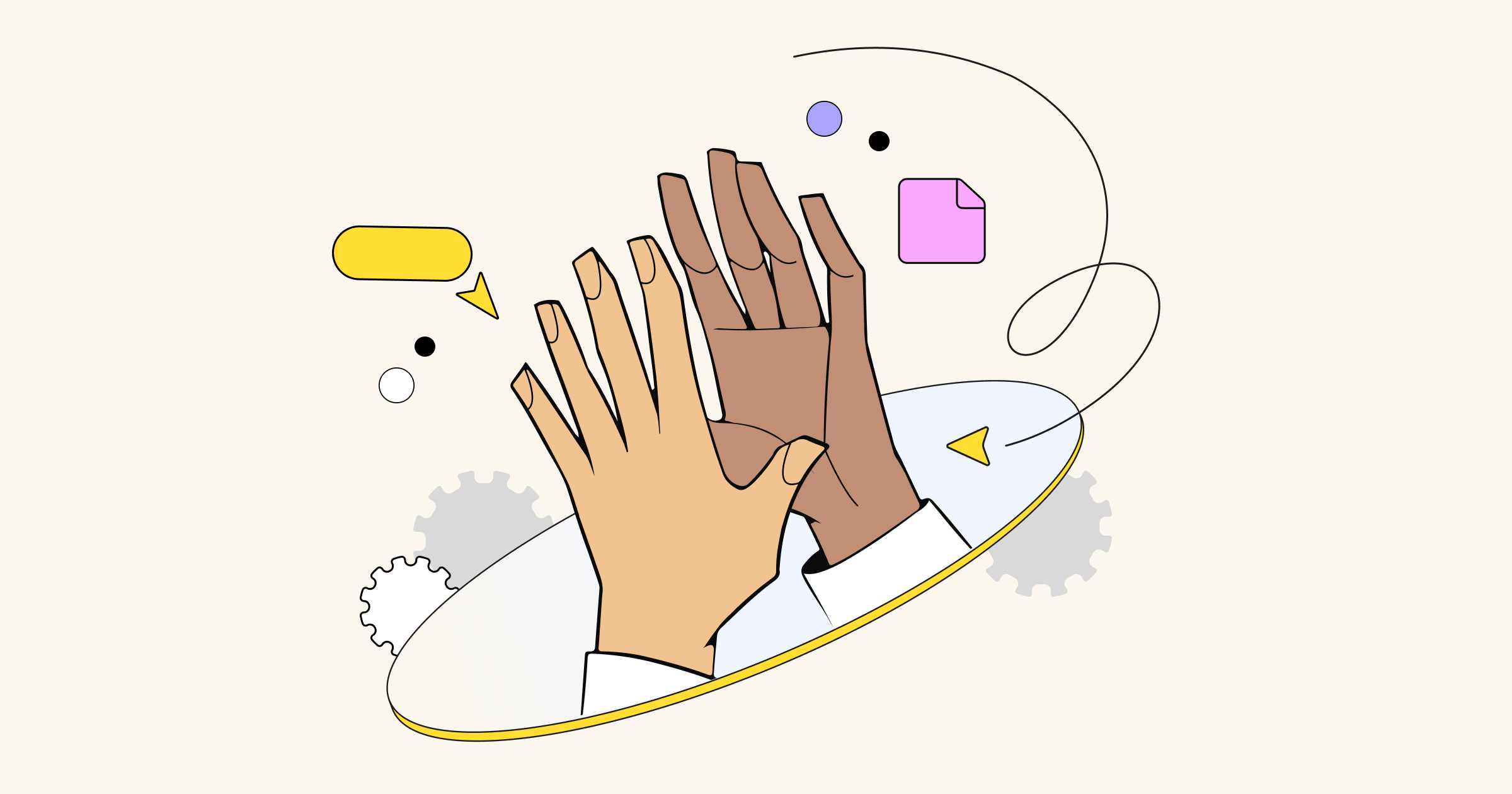You’ve heard the term agile before. The Manifesto for Agile Software Development was signed in 2001 and described a new approach to software development, but agile has since gained traction in a variety of industries – from marketing or construction to healthcare and even finance.
Agile is a collection of guiding values and principles for how teams should complete projects. Agile teams self-organize, iterate, and work in short periods of time to deliver value to customers faster. To put it simply, agile organizations know that the best way to eat an elephant is one bite at a time.
That makes sense, right? But it’s important to note that agile isn’t a quick hack or change you can implement overnight. It requires an entire shift to not only the way your team works but the way they think about their work. That’s where agile games can help.
Difficulties transitioning to agile?
The agile transition is daunting, especially because workers can be notoriously resistant to change. In fact, the American Psychological Association says that change at work is linked to increased stress, distrust, and even employee turnover. Research from Deloitte found that 60 to 70% of all large-scale change efforts fail, mostly because team members bristle at the thought of making a major shift.
So, if you’re wondering how to help your team welcome agile values and principles with open arms, agile games are a great place to start.
How agile games can help
You know that old saying about boiling a frog? If you slowly increase the flame, the frog doesn’t notice the changing circumstances and the rising heat.
Well, using agile games is a lot like that (no heat required, please).
They’ll introduce your team to agile, without overwhelming them right out of the gate. Here’s how they can help your team not only tolerate a switch to agile but actually get excited about it.
1. Boost familiarity
One of the biggest benefits of games is that they help teams get comfortable with agile concepts in a way that’s approachable (not to mention fun). Research from Dr. Stuart Brown, who founded the National Institute for Play, found that we not only enjoy playing games but that they’re actually strongly connected to human development and intelligence.
2. Increase engagement and enthusiasm
You could teach agile principles using a dry lecture or presentation slides. But, agile games offer hands-on learning activities that are far more engaging for your team.
3. Improve creativity and problem-solving
There’s not always time for off-the-wall ideas in the hustle and bustle of daily work life. Games provide an opportunity for your team to flex their creative muscles and brainstorm innovative solutions to the challenge at hand.
4. Promote team cohesion
Agile games are highly collaborative, and most are non-competitive. Your team gets to unite and tackle a shared challenge, all while learning a lot about how they work and interact with one another.
Combine all of these benefits, and you have an efficient and effective team that truly understands the principles of agile.
8 best agile games to try at your next scrum
Now that you know the power of agile games, let’s get into the meat and potatoes. Here are eight agile team building games that work for a variety of group sizes, work environments, and time allotments.
Learn more about Miro for agile teams
1. How To Hug
Time to play: 5 minutes or less
In-person or virtual: Virtual
Number of players: 3+
Learning objectives: Collaboration
How it works
This simple game is a great way to stage a warm welcome, break the ice, and help your team members feel connected to one another – even if they’re distributed across the globe.
Use the How to Hug Miro board that displays an outline of a circle. Each team member should upload a photo of themselves and place it along the circle.
One team member is chosen to move their photo to the center of the circle. Then all of the other team members move their own photos to the center so they touch the center photo. That’s your virtual hug. From there, other team members take turns moving their own photo to the center.
It sounds silly, but it’s sure to have your team members laughing and forging solid bonds—while simultaneously getting familiar with how to use Miro collaboratively.
2. Ball Point Game
Time to play: 15+ minutes (three-minute sprints)
In-person or virtual: Either
Number of players: 4+ players
Learning objectives: Agile production process
How it works
As one of the most well-known agile games out there, the ball point game helps teams understand the agile production process and agile projects. The team needs to use self-organization, establish a process, and iterate. It can be played in-person with physical balls to be passed back and forth, or virtually using a Miro board and icons for each team member.
The goal of the game is simple: Your team will pass a ball (or multiple balls) around the table. Every team member needs to touch the ball once. When a ball makes it all the way around the table, the team earns one point.
The game is split into sprints, with each sprint lasting three minutes. In the first minute, the team should jot down the number of points they expect to score in that first round and discuss their approach. The next minute is spent actually passing the ball around the table and then the final minute is used to write down the actual number of points they earned as well as what they learned.
Then, move into your next sprint. Rather than using one ball, allow team members to choose as many balls as they’d like to pass at one time. Your team will learn a lot as they iterate their approach and attempt to score more points.
3. Paper Airplane Game
Time to play: 45 minutes (nine-minute sprints)
In-person or virtual: In-person
Number of players: 4+ players
Learning objectives: Iteration and time blocks
How it works
Everybody knows how to build a simple paper airplane. But what if you’re trying to build one that will fly the furthest distance? This fun and simple game will familiarize your team with working in sprints or time blocks, as well as iterating on their ideas.
Split your team into groups, and give them each a stack of paper. Their goal is to build as many paper airplanes as possible. The catch? Team members can only make one fold at a time before passing the piece of paper to the next person. Additionally, planes will only count for points if they fly a minimum distance determined by your entire team.
You’ll break the game down into nine-minute sprints: three minutes for planning, three minutes for building and testing, and three minutes for a retrospective. Before the time box begins, teams should give a count for how many planes they plan to produce, so they can evaluate themselves during their reviews.
It’s a great way for your team to get comfortable with numerous aspects of agile, including collaboration, sprints, and agile retrospectives.
4. Bubble Point Game
Time to play: 10 minutes
In-person or virtual: Either
Number of players: 4+ players
Learning objectives: Decision-making and collaboration
How it works
One of the core principles of agile is that teams become more effective by regularly reflecting on how they’re working together. The Bubble Point Game requires that players iterate their descriptions and examine their decision-making processes.
Split your team into groups, each of which will have a Miro board that displays an image that’s covered by a bunch of different-sized bubbles. The goal is for teams to identify what the image is by strategically removing different bubbles that are blocking their view.
The game is split into five sprints, and each sprint allows them to remove a set amount of bubbles. At the end of each sprint, they’ll write down a description of the image they’re seeing as well as some notes about how they decided which bubbles to remove. Did they take a vote? Did they assign a boss? Did people take turns choosing bubbles?
When the game is over, teams not only get to find out if they were right in describing the image, but they also have a record of how their descriptions evolved and their decisions took shape.
5. Chocolate Bar Game
Time to play: 5 minutes
In-person or virtual: Either
Number of players: 4+ players
Learning objectives: Iteration and customer feedback
How it works
This game is designed for people who are new to agile practices, and it’s a helpful way for teams to learn about iterations and customer feedback. This can be done in-person, or using this Miro board.
The goal is simple (and delicious): You’re trying to build a chocolate bar based on input from your customers. Your team will select one person to be the product manager or product owner, and everybody else will be a customer.
The product manager is tasked with creating a chocolate bar that customers will love, and they have their choice of type of chocolate (dark, milk, or white), fillings, toppings, and any other special features (like whether it’s gluten-free or organic).
Each iteration gives the product manager a chance to source feedback from their customers on different elements of the chocolate bar. During the first round, they’ll ask customers to give a thumbs up or thumbs down to each type of chocolate. They’ll make a final decision, jot it down, and move on to the next iteration where they’ll ask about fillings.
They’ll keep going until they’ve created a chocolate bar that satisfies the majority of their customers.
6. Alphabetization Game
Time to play: 10 minutes
In-person or virtual: Virtual
Number of players: 4+ players
Learning objectives: Control strategies
How it works
Another core principle of agile is that team members and managers need to work together, and the Alphabetization Game helps your team practice two different control strategies in a simple setting.
If you’re working with a larger team, it can be helpful to split into smaller groups. On a Miro board, each team member will select one of the available animal icons to represent them. The goal of this game is to organize team members based on different criteria.
In the first round, each team will assign a boss. Everybody else is a team member. Only the boss is allowed to rearrange the icons and team members can only speak if the boss asks them a question. The boss will arrange all of the team member icons based on their team members’ current physical distance from the Salesforce Tower in San Francisco.
Once you’ve tried it that way, your teams move into the next control strategy. In this round, there is no boss—everybody is a team member. Team members can talk openly with one another, and they work to arrange their icons based on the number of books in their houses.
Those are two drastically different approaches, right? This game will teach you a lot about how your team works together. It’s also helpful to time both rounds to see which one is faster for your team.
7. Marshmallow Tower
Time to play: 20 minutes (for one round)
In-person or virtual: In-person
Number of players: 4+ players
Learning objectives: Collaboration and iteration
How it works
Here’s a unique game that challenges your team to build something together. You’ll split them into teams of four members and give them 20 sticks of spaghetti, one yard of tape, one yard of string, and a single marshmallow. Their task is to build the tallest freestanding structure, with the marshmallow on top.
The concept sounds simple, but its execution is deceptively tricky. Teams need to collaborate quickly, and you’re sure to see plenty of towers collapse at the last second as teams scramble to place the marshmallow on top of their structures.
But, repeat the challenge several times, and you’ll see teams refine their approaches to collaboration and iterate on their earlier creations.
8. Coin Game
Time to play: 20 minutes
In-person or virtual: In-person
Number of players: 5-7 players
Learning objectives: Self-organization and focus
How it works
This game teaches a valuable lesson in the dangers of multitasking and what happens if you try to focus on too many things at one time. You’ll need 20 coins: five pennies, five nickels, five dimes, and five quarters.
Then, you’ll split your team into different roles: workers, managers, and a customer. Every single worker needs a manager overseeing them. So, if you have two workers, you need two managers.
Put all of the coins in front of one worker and ensure that each coin is flipped the same way (either heads up or tails up). That worker can only use one hand (their left hand if they’re right-handed and their left hand if they’re right-handed) to flip all of the coins over. They pass the coins to the next worker, who flips them the other way using one hand. The final worker flips the coins over and passes them to the customer.
Each manager times how long it takes their assigned worker to complete their individual portion, while the customer records how long it takes from the start to when they receive all 20 coins.
You’ll do four iterations of this exercise, each of which has new rules (such as reducing the batch of coins). Your team will start to see that smaller batches of coins enable them to deliver to the customer faster.
Looking for more inspiration on how to manage your agile workflows? Check out more templates on Miroverse.



